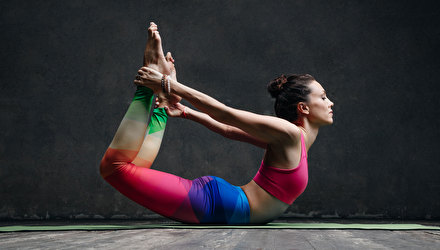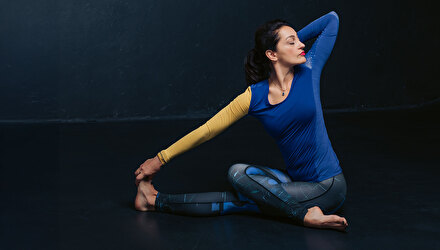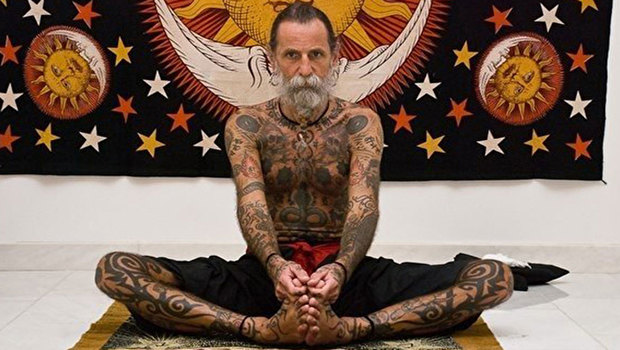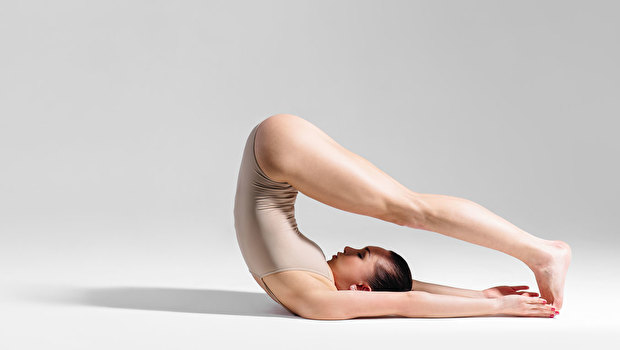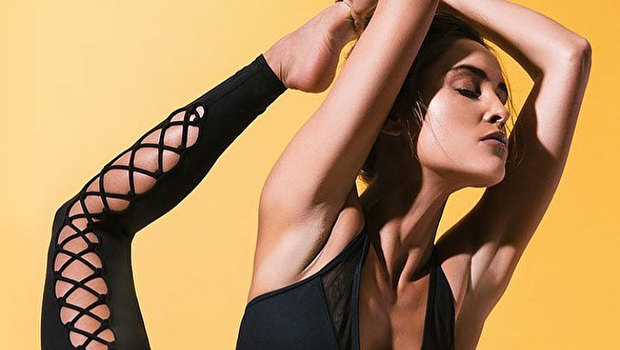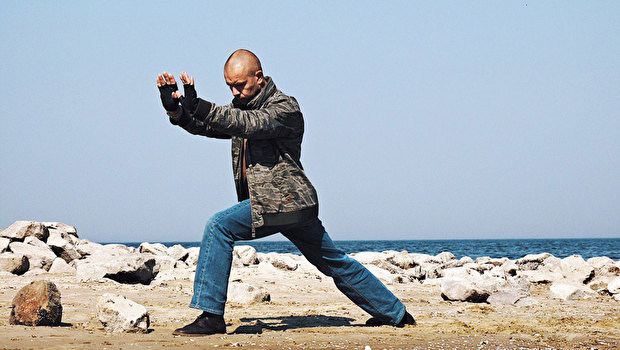The name of the asana comes from the words "eka" - one, "pada" - leg or foot, "capota" - turtledove or dove. Rajakapota is the king of pigeons. In this asana, the chest protrudes forward like a dove, hence the name.
Rules of execution (Iyengar, Yoga Deepika):
1. Sit on the floor, stretch your legs in front of you.
2. Bend the right knee and place the right foot on the floor so that the right heel touches the left groin. Keep your right knee on the floor.
3. Take your left leg back and straighten it to its full length on the floor. The front surface of the left thigh, knee and shin, as well as the upper part of the toes of the left foot, should touch the floor.
4. Put your palms on your waist, push your chest forward, stretch your neck, tilt your head as far back as possible and linger for a while in this preparatory position.
5. Then put your palms on the floor in front, bend your left leg at the knee and raise your left foot up to your head. Left leg from knee to ankle should be perpendicular to the floor. To achieve this, you need to tighten the muscles of the left thigh.
6. With an exhalation, take the right hand behind the head and grab the left foot with the brush. Take a few breaths. Then exhale again and grab the left foot with the left hand. Put your head on your left foot.
7. Push the chest forward, take the hands further down, grab the left ankle and lower the head so that the upper lip touches the left heel (Photo 542). Stay in this position for about 10 seconds. Since the chest is fully expanded and the abdomen is compressed, breathing will be rapid. Try to breathe normally.
8. Release the left ankle, taking away the hands one by one, and place the palms on the floor. Straighten and move forward the left leg, then straighten the right.
9. Repeat the pose on the other side for the same duration. Pull the left foot to the right groin, stretch the right leg back and grab it with the hands of both hands, the foot of the right leg behind the head.

Effect:
The asana is especially useful for disorders in the urogenital area, since it is in this department that the blood circulation improves significantly when performed. The flexibility of the spine develops. The effect on the endocrine glands is significant: the thyroid, parathyroid, pancreas, and sex glands (both male and female) function much better with regular asana practice.



